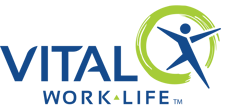Bridging the Mental Health Gap Between Healthcare Leadership and Clinicians

The latest survey from VITAL WorkLife exposes the persistent disconnect between healthcare leadership and clinicians on mental health needs. Findings reveal gaps in perception, prioritization, and solutions as the healthcare workforce faces ongoing burnout and well-being crises.
Explore the Findings
Download our report, 2024 Healthcare Trends & Insights with actionable tips on how leaders can rebuild team connections amidst the pandemic's lingering effects and prioritize well-being to overcome stress, trauma and isolation.
Read the Survey Report to Discover:
- Detailed analysis of the disconnect between leadership initiatives and clinician needs
- How addressing burnout can improve clinician recruitment and retention
- The importance of clinician-focused mental health and well-being strategies
- Actionable insights to bridge the gap and offer meaningful support

Key Findings

Clear Disconnect
79% of clinicians believe their employer has not provided sufficient mental health resources—compared to more than 95% of healthcare leadership who believe they have addressed worker burnout with sufficient programs and attention.

Low Priority
More than 70% of clinicians believe that leadership considers mental health a low-priority issue.

Misalignment
While 98% of healthcare leaders believe their initiatives prioritize clinician well-being, 39% of clinicians think that leadership is more focused on operational performance than on provider mental health and well-being.
"Clinicians are clearly signaling distress, and while leadership acknowledges the issue, there is a gap in urgency and the types of solutions being offered. The well-being of clinicians is not just an HR initiative—it is fundamental to sustaining physician well-being, reducing turnover and recruiting costs, and maintaining optimal patient safety and outcomes." —Mitch Best, CEO, VITAL WorkLife
The survey was commissioned by VITAL WorkLife and conducted over a three-week period in January 2025. The quantitative research was conducted through a comprehensive online survey administered to 210 healthcare professionals across the United States. Respondents represented diverse healthcare functions including leadership level medical, nursing, HR, and wellness staff, as well as clinicians, ensuring a representative cross-section of the healthcare industry. The survey utilized a stratified random sampling approach to ensure proportional representation across healthcare disciplines, practice settings, and geographic regions. All participants were verified full-time healthcare professionals.

